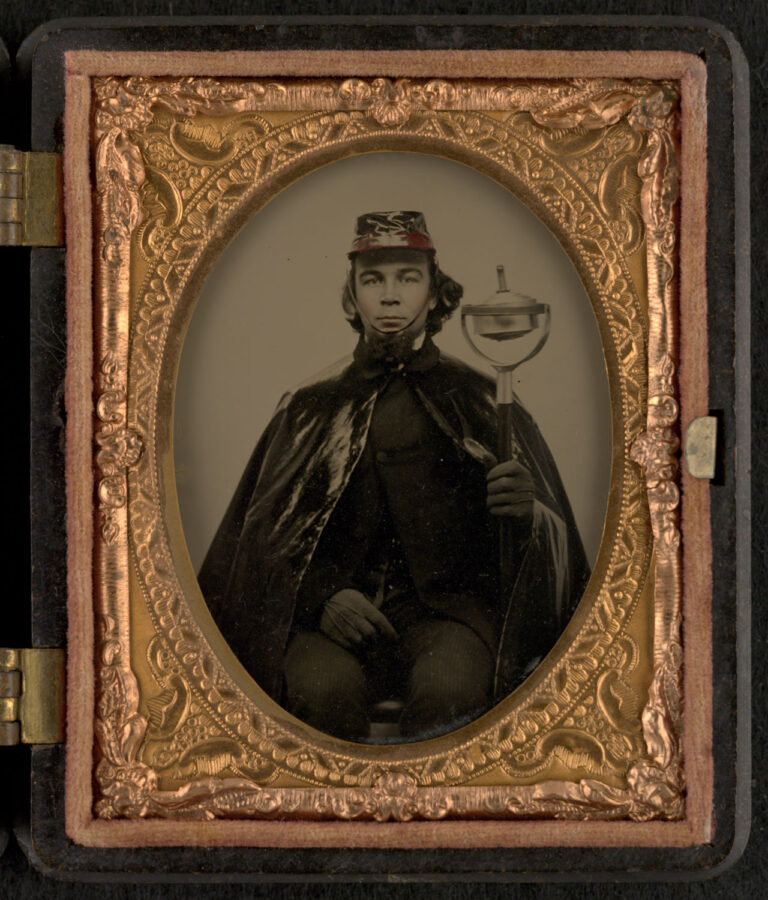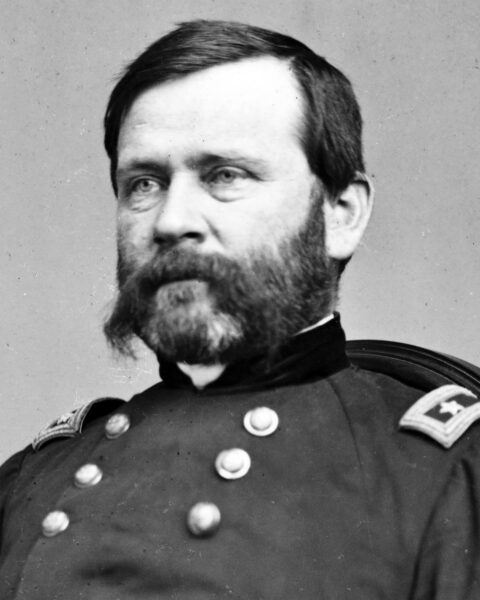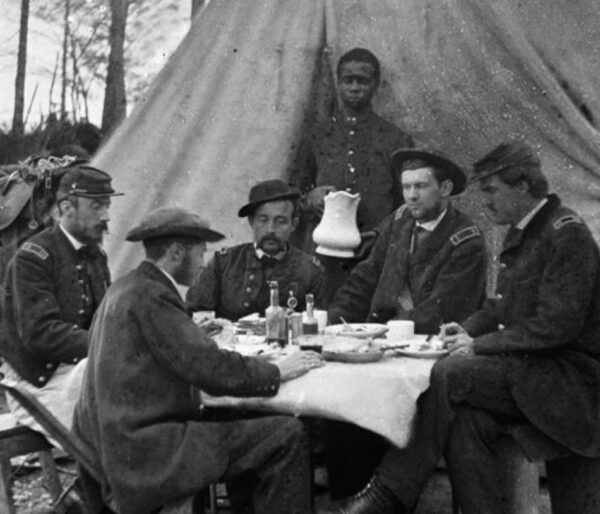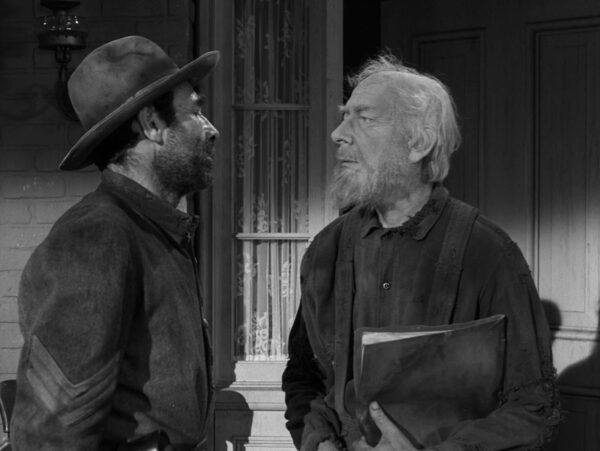 Library of Congress
Library of CongressNew Hampshire resident George Woodward wears the oilcloth cape and hat characteristic of the “Wide Awakes,” a group of enthusiastic young men who supported Abraham Lincoln for president in 1860. He also holds a whale oil torch that members carried at pro-Lincoln rallies.
WIDE•A•WAKES | noun | A political division of the Republican Party, organized in 1860 to promote the election of Lincoln; one of the first organizations of uniformed torchlight-parade enthusiasts in American politics.1
With torches held aloft, approximately 70,000 militant men—dressed in identical black capes and caps—marched through the streets of New York one evening in October 1860. Nearly 150,000 spectators turned out to witness the massive procession. Near Union Square, The New York Times reported, “the whole street becomes blocked with a barricade of flesh, broadcloth and crinoline, jammed and crowded together in one inextricable mass” as “a grand circling procession of many thousand torches, banners, and richly-colored lamps, sweeping in a sort of patriotic war-dance [went] round and round the astonished statue of Washington!” On Fifth Avenue, the “solid brown-stone fronts, plate-glass windows and blinds of polished woods” were brightly “illuminated by the artificial daylight of more than ten thousand torches.” The beating of drums and trilling of fifes filled the air as men—20 to 30 abreast—marched with militant precision. “Solid and steadfast men—the bone and sinew, the intellect and strength of many States—are ranged here under their respective banners, all dressed in shining capes and caps, all bearing flaming torches, and the whole immense force being under as good discipline and order as any of our best-exercised militia regiments,” the Times report continued. “The smoke of so many torches forms a red canopy over the whole scene; and when the orders are given to march, one might fancy that a river of burning billows was rolling rapidly forward through the channel of sculpted walls.” Halting, the men cheered for “Abraham Lincoln,” “Hannibal Hamlin,” and “Thurlow Weed.”2 Awakened by the ruckus around midnight, New Yorkers asked: “Who are these Wide Awakes?” “Where did they come from?”3
Seven months earlier, on March 3, a group of young clerks had gathered in a room above the City Bank in Hartford, Connecticut. They were determined to form an organization committed to supporting Lincoln and other members of the Republican Party. After electing officers, the group set about deciding on a name. Twenty-three-year-old Henry P. Hitchcock suggested, “Why not name it ‘Republican Wide Awakes.’”4 The week before, the Republican club of Hartford had left a public rally with Cassius M. Clay, an outspoken abolitionist from slaveholding Kentucky, energized and feeling very “Wide Awake,” according to the Hartford Courant article written by its city editor, William P. Fuller.5 But the name was not quite right for this new political club. Dropping “Republican,” one of the group submitted “a motion … to give our club a name, and the name ‘Wide Awakes’ … was adopted by a unanimous vote.”6
The young Hartford clerks were awakening politically. At the time, however, the phrase wide awake could imply something more than simply alert, vigilant, or conscious. In the early 1850s, native-born Americans formed secret orders and social clubs devoted to the violent expulsion of recent immigrants and Catholics, especially those hailing from Ireland.7 In July 1854, a rural Illinois newspaper reported that “a new secret order of Americans has been formed in New York, under the title of ‘The Wide Awakes,’ the members of which are already numerous and exceedingly influential…. That they will have a strong and powerful bearing upon politics, in one election at least, is an assertation that cannot be legitimately or conclusively controverted.” It continued, “the ‘Wide Awakes,’ we are informed, are comprised exclusively of persons who can boast of purely American ancestors for the latest three generations. They have resolved—so our informant says—to keep no written record of their transactions, so that nobody can steal their secrets.”8 Notorious for their secrecy and their extreme nativist and anti-immigrant ideology, the “Know Nothings,” “Know Somethings,” as well as the “Wide Awakes” formed chapters in cities and town across the United States and became known nationally for their violent anti-immigrant crusades.
The movement also left a mark on fashion. Particularly in the Midwest and mid-Atlantic, river boat captains, stevedores, and working men often donned a wideawake—a broad, floppy, wide-brimmed hat. Long associated with the English working-class, the hat became a symbolic element of the Know Nothing Party.9 And during the spring and summer of 1854, countless shopkeepers and hatters advertised their novel goods. In New York, snow-white “Wide Awakes” could be purchased at a number of stores. C.H. Atkins, owner of one such shop, specified, “Wide Awake Hats, warranted without nap—not the old fogy looking affairs sold elsewhere, but the genuine article—now ready, in large or small quantities.”10 In Brooklyn, especially, “Know Nothings”—wearing their newly bought floppy white hats—stopped and attacked recent immigrants on the streets. And the Irish retaliated. The New York Tribune reported, “certain reckless Irishmen hereabouts are pursuing a course which, if further followed, is sure to bring them into serious trouble. They have got into their heads the idea that the jaunty little white felt hat known as the ‘Wide-Awake’ is the peculiar badge of the ‘Know-Nothings,’ and have taken occasion to commit brutal assaults upon the most peaceable citizens for no other reason than because they wear these hats.”11 The wideawake hats quickly became an iconic part of the “Know Nothings” or “Wide Awakes.” The nativist political movement, however, was short-lived. In an era of rapidly escalating sectional tension, northern and southern chapters diverged over the issue of slavery and its expansion into the western territories. By 1860, the “Know Nothings” had been largely forgotten.
At least a few of the young men organizing in Hartford almost certainly remembered the earlier anti-immigrant version of the “Wide Awakes” and their iconic hats. The Hartford Courant had long plotted “to Americanize this county” and supported the American Party for years before switching its affiliation to the Republicans in the late 1850s. And at least one member of the newly formed “Wide Awakes” had attended Clay’s February 25 rally wearing a big old floppy white hat, a wideawake.12 Like their predecessors, these Republican “Wide Awakes” incorporated a hat into their militant’s uniform, which consisted of a black enameled cape and a black military-style cap.
The Wide Awakes made their first public appearance just two days after their founding. On March 5, 1860, Lincoln, “the rail-splitter of Illinois,” visited Hartford.13 Standing before a crowd outside the city hall, Lincoln declared, “We cannot act otherwise than we do, believing that slavery is wrong. If it is right, we may not contract its limits. If it is wrong, they cannot ask us to extend it. Upon these different views, hinges the whole controversy. Thinking it right, they are justified in asking its protection; thinking it wrong, we cannot consent to vote for it, or to let it extend itself. If our sense of duty forbids this extension, let us do that duty…. Let us not be slandered from our duties, or intimidated from preserving our dignity and our rights by any menace; but let us have faith that Right, Eternal Right makes might, and as we understand our duty, so do it!”14 As the speech ended to applause, the Wide Awakes escorted Lincoln on a short carriage ride to the home of their mayor, Timothy Ally. The Wide Awakes’ campaign for justice had officially begun in Hartford.
At its zenith, somewhere around 100,000 Americans belonged to the Wide Awakes. Throughout the summer and autumn of 1860, thousands of young men marched in torchlight processionals up and down the eastern seaboard—in Hartford, Boston, New York, Philadelphia, and Washington, D.C., as well as in midwestern towns such as Cleveland, Columbus, and Madison. Coming together in support of the Republican cause and its political candidates, these young men enjoyed the fraternal camaraderie of their peers and welcomed the attention of female admirers.15 Looking out at a sea of Republican supporters at a Lincoln campaign event in Detroit, William H. Seward, who had lost the nomination battle to Lincoln, declared, “the reason we didn’t get an honest President in 1856, was because the old men of the last generation were not Wide-Awake, and the young men of this generation hadn’t got their eyes open. Now the old men are folding their arms and going to sleep, and the young men throughout the land are Wide Awake.”16 Although not the decisive voting bloc, the Wide Awakes—alongside thousands of other Republican voters—propelled Lincoln to the White House on November 6, 1860. Some chapters disbanded soon after the election while others continued to drill in secret. Once war broke out, many of these young Republicans were eager to fight for cause, country, and Union.17
A blip in American political history, the Wide Awakes fell into almost total obscurity at the end of the Civil War. In the 21st century, the Wide Awakes find themselves listed in William Safire’s Political Dictionary alongside “anxious seat” (potential candidate, probable loser), “bogus baby” (bad legislation), “candle box returns” (phony voter), “hunker” (conservative Democrat), “scratcher” (split ticket voter), and “tin pan” (a caucus) in the “obsolete political terms” category.18 In today’s turbulent political arena, we also face a wide variety of new terms, acronyms, and organizations—some of which may last for decades while others may be only passing fads.
Nonetheless, the Wide Awakes should remind us of something important—and timeless—about American democracy: that diverse groups of people can, and historically have, come together to exercise their right to freedom of speech and to demonstrate for deeply held political beliefs. As historian Jon Grinspan reminds us: “Today, progressive activists online sometimes name-check the Wide Awakes, styling them as woke heroes from the past. But they were really something more complex—and more thrilling: a genuine coalition of people who couldn’t agree on much but who marched side-by-side against the greatest threat to democracy.”19
Tracy L. Barnett is currently a visiting assistant professor of history at Old Dominion University in Norfolk, Virginia. She recently earned her Ph.D. in American History from the University of Georgia. Firearms—their meaning to men and their availability in 19th-century America—are at the center of her academic scholarship.
Notes
1. John Franklin Jameson, Dictionary of United States History, 1492—1895: Four Centuries of History (Boston, 1894), 711.
2. The New York Times, October 4, 1860; Jon Grinspan, “‘Young Men for War’: The Wide Awakes and Lincoln’s 1860 Presidential Campaign,” Journal of American History, Vol. 96, No. 2 (September 2009): 360.
3. New York Herald, September 19, 1860; Jon Grinspan, “Young Men for War,” 357.
4. Jon Grinspan, Wide Awake: The Forgotten Force That Elected Lincoln and Spurred the Civil War (New York, 2024), 49–50.
5. Hartford Courant, March 3, 1860.
6. Julius G. Rathbun, “The ‘Wide Awakes’: The Great Political Organization of 1860,” Connecticut Quarterly, Vol. I (October 1895): 328–329.
7. Grinspan, Wide Awake, 50.
8. Emphasis in the original. Alton Weekly Telegraph (Alton, Illinois), June 1, 1854.
9. Grinspan, Wide Awake, 51.
10. New York Daily Herald, June 10, 1854.
11. New York Tribune reprinted in New Orleans Crescent, June 28, 1854.
12. Grinspan, Wide Awake, 51.
13. Rathbun, “The ‘Wide Awakes,’” 329.
14. Hartford Courant, March 6, 1860.
15. Grinspan, “Young Men for War,” 360, 363, 365–366.
16. The New York Times, September 4, 1860.
17. Grinspan, “Young Men for War,” 360, 363, 377.
18. William Safire, Safire’s Political Dictionary (New York, 2008), 486.
19. Jon Grinspan, “These torchlit young marchers helped to save American democracy,” Washington Post, May 14, 2024. See also, Jon Grinspan, “The 19th-Century Club You’ve Never Heard of That Changed the World,” The New York Times, June 7, 2024.




